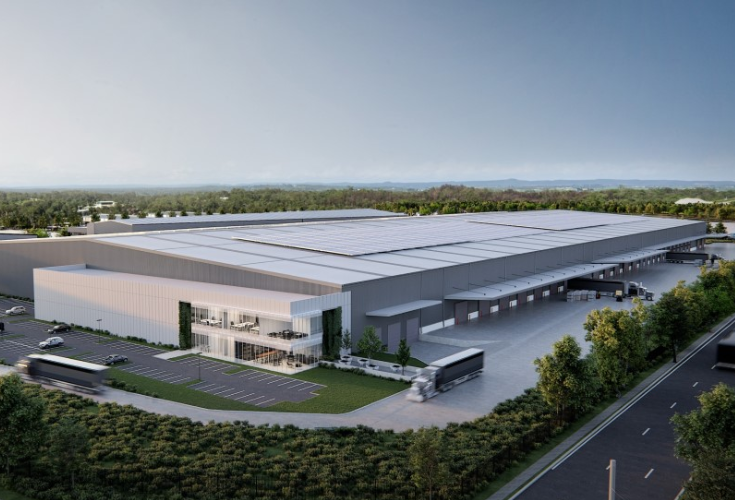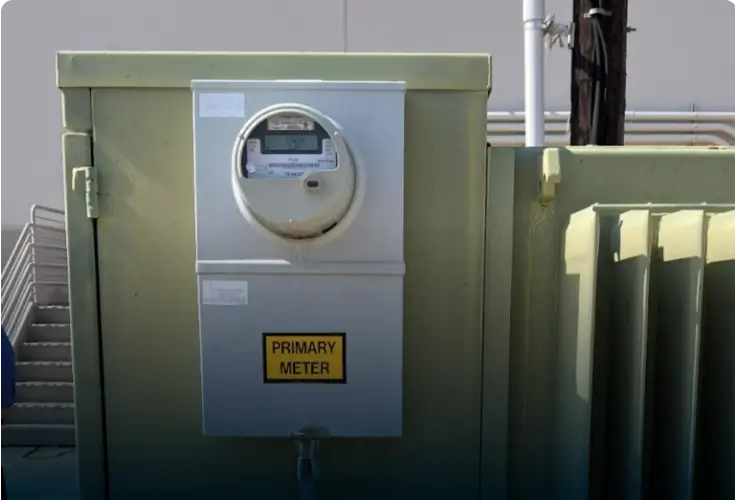Supporting tenants’ sustainability goals has become a “secret weapon” for a select group of industrial landlords.
That shift is being fueled by a broader trend: 45% of Fortune 500 companies now have net zero commitments — a dramatic increase from just 8% in 2020.
For industrial tenants, sustainability isn’t a nice-to-have anymore. It’s becoming central to how they operate, report, and make decisions.
Interestingly, many landlords didn’t set out to offer this kind of support. They stumbled onto it — often starting with pressure from institutional investors to report to GRESB, or mandates from local regulators requiring utility data for compliance.
But what began as a compliance exercise evolved into something more strategic: a way to engage tenants through operational insights, energy services, and sustainability automation.
Tenants Are Committed to Decarbonization
In industrial real estate, it's easy to assume that sustainability is someone else's problem. After all, the tenant runs their operations.
They’re the ones manufacturing, storing, shipping, and consuming energy. But here’s the reality landlords need to wake up to: your tenants already have sustainability goals—some of them more ambitious than yours.

FedEx plans to be carbon neutral by 2040. Amazon aims for net-zero carbon across its operations by 2040 as well. Even tenants you may not consider "blue chip" are committing: Dollar Tree, Sherwin-Williams, Rivian, and Jabil all publish sustainability reports with measurable goals.

Whether they’re shipping logistics, auto manufacturing, retail distribution, or consumer packaged goods, many industrial tenants are aligning with science-based targets, sustainability benchmarks, and investor expectations.
But here’s the kicker: most of them aren’t expecting any support from their landlords.
From the tenant's perspective, they’re on their own.
Landlord as a partner
Here’s how forward-thinking landlords are flipping the script.
Instead of waiting for requests or sustainability updates, they’re stepping in with data, insights, and targeted recommendations that help tenants cut costs, reduce emissions, and hit their sustainability targets faster.
And the foundation for that support? Utility data.
By collecting tenant-controlled utility data, landlords are unlocking a new type of value:
- Through conservation measures like base load reduction and operational or weather load modulation
- Through peak load management strategies to lower annual peak charges and optimize equipment startup
- By enabling participation in demand response or energy procurement programs to cut costs and create new revenue streams
Some landlords go further, offering tenant-facing dashboards and reports through dedicated portals that become a one-stop shop for everything the tenant needs related to energy.
What began as a compliance exercise evolved into something more: a way to differentiate your product in ways that actually matter to tenants.
Imagine walking into a conversation with your tenant and saying, “Did you know you could save $80,000 a year just by doing this?” That’s your ace in the hole.

The ROI of Supporting Tenant Sustainability
The payoff isn’t theoretical. It’s real. Here’s what happens when landlords engage:
- Increase retention
When leases come up for renewal, being the landlord who helped reduce emissions and lower costs puts you in a stronger position. Contracts can be re-signed at market rates, backed by a track record of delivering measurable value throughout the lease term. - Open new revenue streams
Energy services can be monetized. Whether through cost recovery, shared savings, or bundled sustainability packages, supporting tenants can unlock financial upside. - Attract high-caliber tenants
Companies with strong sustainability mandates are actively seeking space that can support their goals, and you can be a strategic fit. These tenants tend to lease more space, sign longer terms, and have the lowest default rates. - Boost asset value
Stronger tenant relationships, longer lease terms, and higher NOI drive asset appreciation. In competitive markets, this is how funds stand out and outperform.
Time to Market Your Advantage
Once you begin offering these services, don’t keep it quiet.
Build it into your marketing strategy. Make it part of your pitch deck. Use tenant success stories to demonstrate impact.
Better yet, integrate it into the leasing conversation:
Are sustainability targets part of your tenant's corporate KPIs?
Are they reporting Scope 1 and 2 emissions?
Are they receiving investor pressure on ESG?
Many tenants will say yes to at least one of those.
And if you have answers ready, with examples of how your building or service platform can support those goals, you're giving them a reason to choose you over a competitor.
Final Word
The era of passive ownership is over.
Today, industrial landlords who treat sustainability as a value driver are positioned to win.
Your tenants have set ambitious goals. They’re investing in efficiency, reporting progress, and making real operational changes. Most don’t expect their landlord to help. Which means the ones who do step up have a serious edge.
Even if you don’t report to GRESB or participate in benchmarking programs, many of your peers do and they’re already using it to deliver value to tenants. If you’re not enabling progress, they are.
Support your tenants, and you’ll strengthen relationships, boost retention, and increase the value of your portfolio.
The only question is: Are you helping them get there or leaving value on the table?
CASE STUDY
Top 10 Global Asset Management Firm deploys Enertiv to get 100% utility data coverage across 100+ industrial sites
Light at the end of the tunnel
If you’ve made it this far, you’ve likely realized that implementing a utility data collection system in-house involves much more than installing meters and connecting APIs.
Yes, it’s possible to build it from scratch.
But it takes time, resources, and a learning curve that’s hard to fully anticipate.
Unless this is your core business, you’ll likely spend years learning lessons we’ve already paid for — through failed installs, messy integrations, and countless conversations with teams with real-world demands.
What may seem like a straightforward checklist today was, for us, a long path marked by challenges and meaningful breakthroughs.
Today’s sustainability leadership depends on speed and data precision. If you’re serious about hitting decarbonization targets, every delay in collecting accurate utility data is a missed opportunity.
That’s why going through this entire build process internally can actively slow your energy transition.
You don’t need to start from zero to reach net zero. You just need to avoid the mistakes that stall everyone else.





%20consider.webp)
